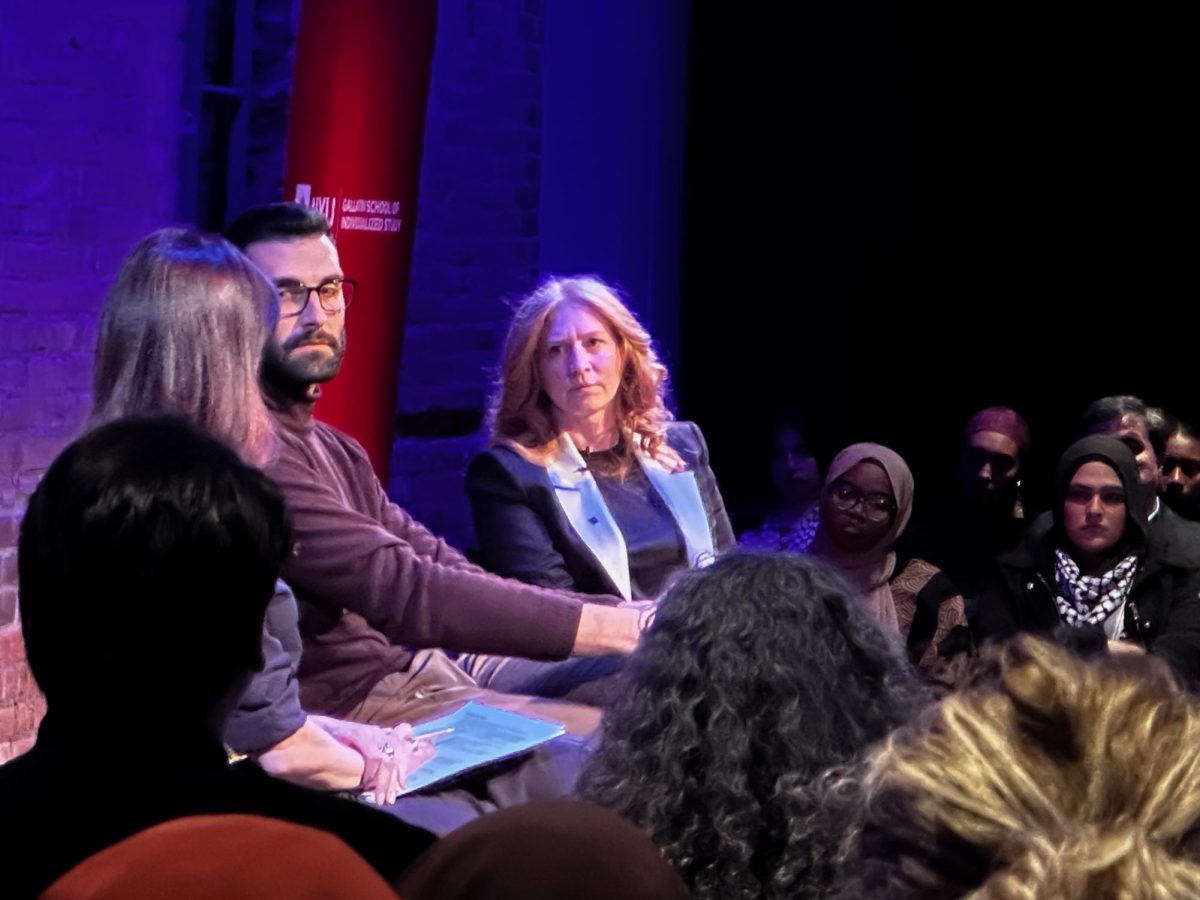Palestinian photojournalist Motaz Azaiza spoke at a Thursday panel hosted by the Gallatin School of Individualized Study about his first-hand experience documenting life in the Gaza Strip since the beginning of the Israel-Hamas war. The event, which gathered around 200 students and faculty, also featured Committee to Protect Journalists CEO Jodie Ginsberg, who discussed journalist deaths in the war and the importance of conflict photojournalism.
At the panel, moderated by Gallatin professor Lauren Walsh, Azaiza and Ginsberg spoke about “the mental health and emotional toll” that comes with photojournalism in war zones. Azaiza — who documented the war for 108 days on social media before evacuating to Qatar — said his on-the-ground coverage, most of which featured graphic depictions of violence and daily life in Gaza, has changed the way he views his work in photography and journalism.
“I am more than just a journalist now,” Azaiza said at the event. “By watching my life in Gaza, you will know more, you will understand more, than just looking at Gaza in the news.”
Since the start of the war on Oct. 7 — which started after the Palestinian militant group Hamas attacked nearby Israeli towns — more than 30,000 Palestinians have been killed in the Israeli military’s response, according to the Gaza Health Ministry. At the event, Ginsberg said at least 95 journalists and media workers have been killed since the conflict began, according to reports by the CPJ, a journalists’ rights nonprofit.
In November, students and alumni of NYU’s Arthur L. Carter Journalism Institute wrote a letter calling on the department’s faculty and administration to acknowledge the journalists killed during the war and bring attention to what they called “violations of human rights and press freedom.” Later that month, students also met with the journalism department to criticize its disregard for what the CPJ had called the “deadliest period for journalists.”
“Academia needs to dissect the craft of journalism and conflict, how you can help journalism during conflict and the question of safety during conflict,” CPJ researcher Mohamed Mandour, who attended the event, told WSN.
Azaiza started his coverage by posting videos and photos of civilian casualties on his Instagram account at the beginning of the war, which at the time had a following of around 25,000 people. His audience has since grown to over 18 million followers, having been interviewed by major news outlets such as The New York Times, The Guardian and CNN.
He guided attendees through his decision-making process while reporting in an active war zone, using one of his photos of someone under someone under rubble to explain how he balances “the need to take pictures and the need to save a life.” Azaiza also spoke about his shift from recreational photography, which he said focused on color and visuals, to capturing an unfiltered portrayal of life in Gaza amid the conflict between Israel and the Palestinian militant group Hamas.
“I don’t think, I just act,” Azaiza said. “When the angles are right before me, there is no need to put the camera down.”
At the panel, Ginsberg spoke about the “tightening of press freedom” and record numbers of journalists arrested and killed since the start of the Israel-Hamas war. She also spoke about the crucial role that Palestinian civilians play as they document their experiences in an area where access for foreign journalists is “impossible.”
“It sounds really strange when you’re talking about these images of dead bodies, but that humanizes it,” Ginsberg said. “The beautiful pictures of destroyed buildings can look quite artistic, but people are dying and have died, and those images attest to that. That documentation work is really important.”
Mohamad Bazzi, the director of the Kevorkian Center for Near Eastern Studies at NYU who attended the event, told WSN the panel sold out “very quickly” and emphasized the emotional depth of Azaiza’s discussion.
“The trajectory of going through everyone he’s lost, one by one — that was one of the most powerful things,” Bazzi said. “Going through the layers of grief he’s experienced, one after another, that really resonated with the audience.”
Contact Dharma Niles at [email protected].






















































































































































